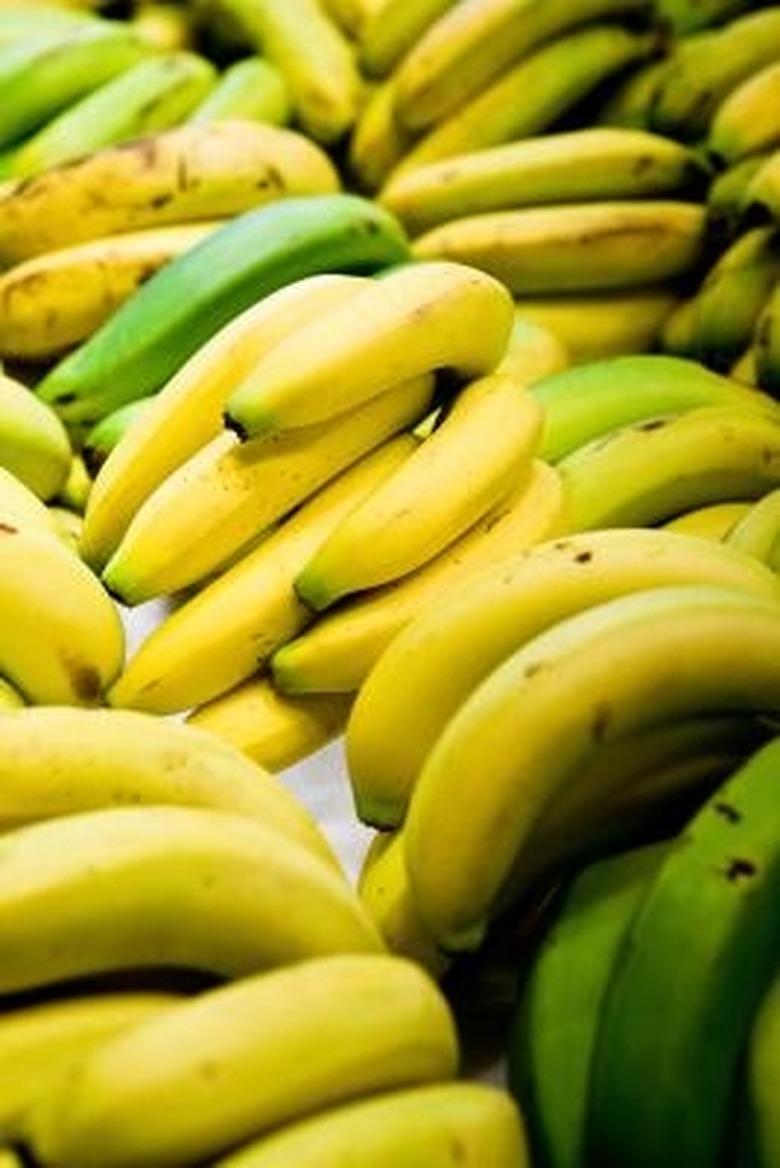How To Grow Banana Trees In Texas
Things Needed
-
Shovel
-
Mulch
-
Ammonium sulfate
-
Machete
Tip
It takes 10 to 15 months for banana trees to fruit. If your part of Texas experiences frost, the tree will die when the temperature dips, resulting in little fruit, if any. Trees in frost-free regions will produce heavy fruit yields.
Bananas are tropical plants, so they will grow well in Texas. Fruit yield is favorable in warmer regions, and the trees are used are ornamental specimens in cooler regions. Varieties that thrive in Texas include dwarf cavendish, which grows fruit that typically is found in grocery stores; orinoco or "horse" banana, which produces fruit that is used in cooking; lady finger, which produces a more flavorful fruit than other types; and apple or manzana trees, with fruit that has an apple-like aftertaste.
Step 1
Check the soil drainage. If it feels heavy and wet, it's probably too wet for banana trees. While they grow in many types of soil, it has to be well draining or the tree roots can rot. Plant in raised beds if the soil is too wet.
Step 2
Plant a location that is protected from heavy winds and cold snaps. According to Texas A&M, the warmest spot is near the southeast or south side of a house.
Step 3
Remove weeds and planting debris from the planting site. Weeds will steal nutrients from the tree.
Step 4
Shovel out a hole that is larger than the root mass. Banana trees typically are sold in nursery containers, which offer a guideline of how deep they should be planted. Put the tree in the hole, making sure it's buried at the same depth as the container. Fill in around the roots with the removed soil. Tamp down to remove air pockets.
Step 5
Space banana trees 2 to 3 feet apart if you're planting them for appearance sake. For fruit production, space them 8 to 10 feet apart.
Step 6
Water banana trees to keep the soil moist but not saturated. Deep waterings are preferred; let the soil get wet each time. Do not allow water to pool, or it can cause root rot.
Step 7
Spread 2 to 3 inches of of organic mulch such as compost or wood chips around the trunk over the root system. Do not let the mulch touch the trunk. Mulch will keep weeds at bay and retain soil moisture.
Step 8
Fertilize the banana trees. According to Texas A&M, there isn't much research about fertilization requirements under Texas conditions. Most bananas need nitrogen, though, for optimal growth. Apply 1/4 cup ammonium sulfate (21-0-0) each month for the first four months of growth.
Step 9
Limit the number of plants to five or six per mat. Cut off suckers with a machete when they are 3 to 4 inches tall. Cut the mother plant down to the ground after fruiting. It will not fruit again.
